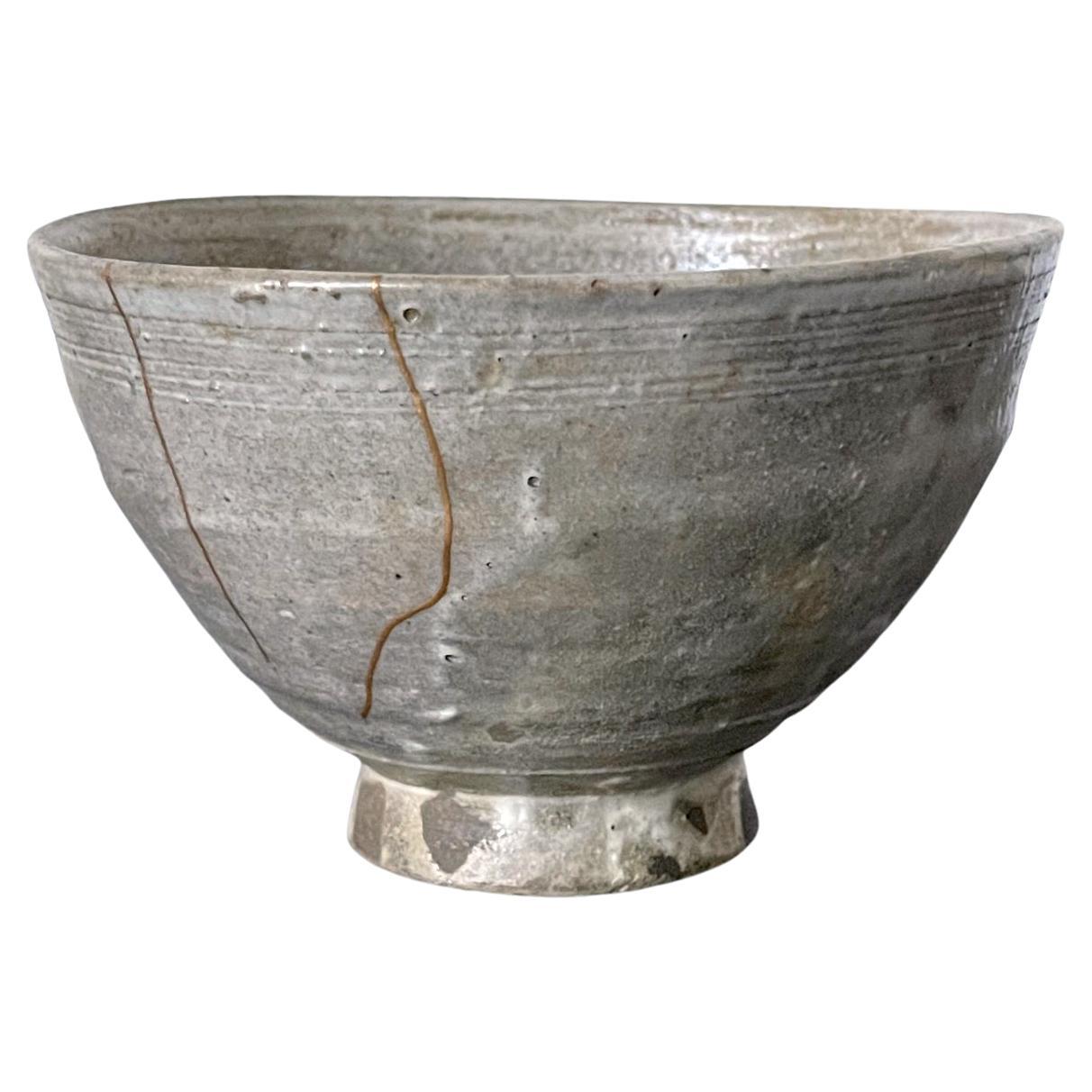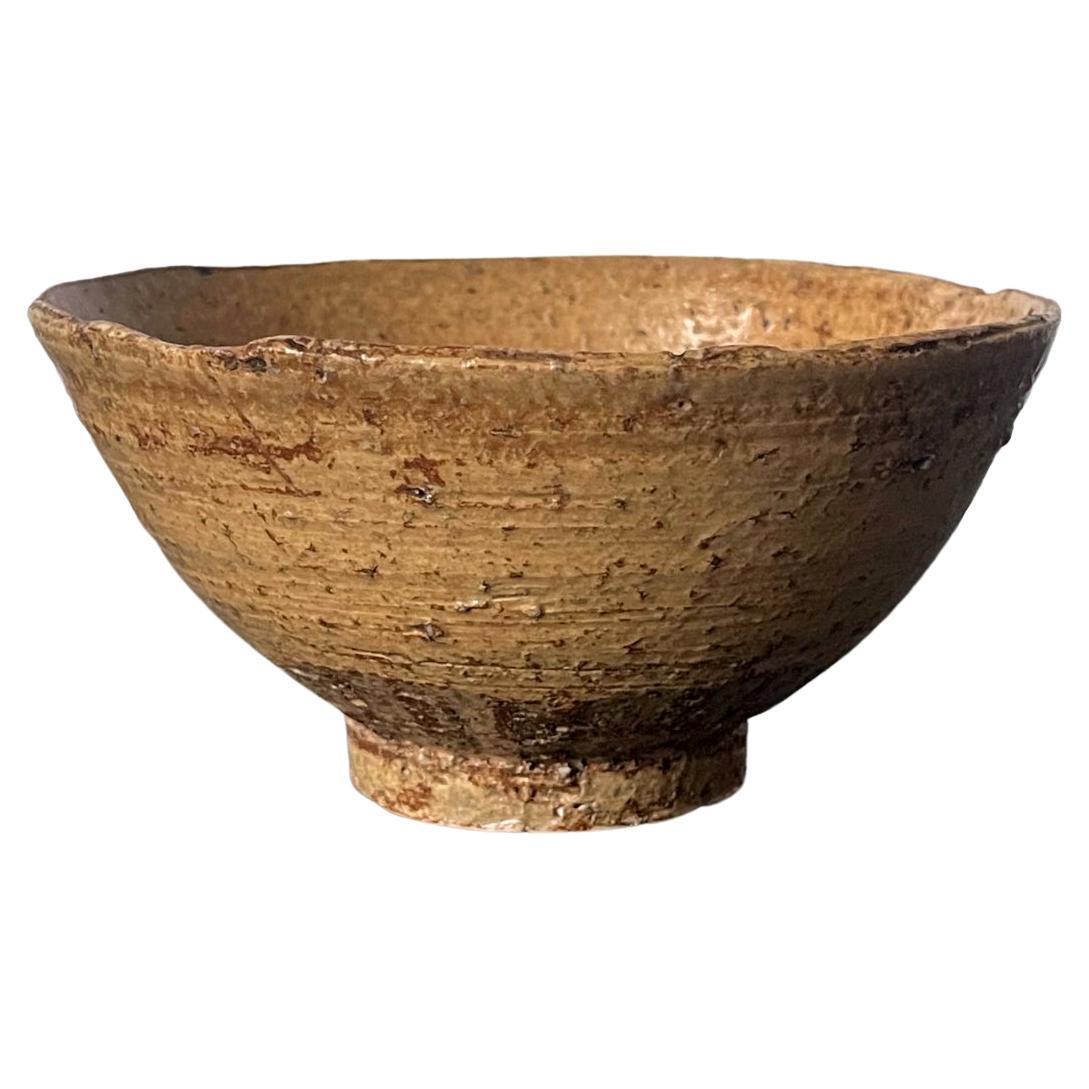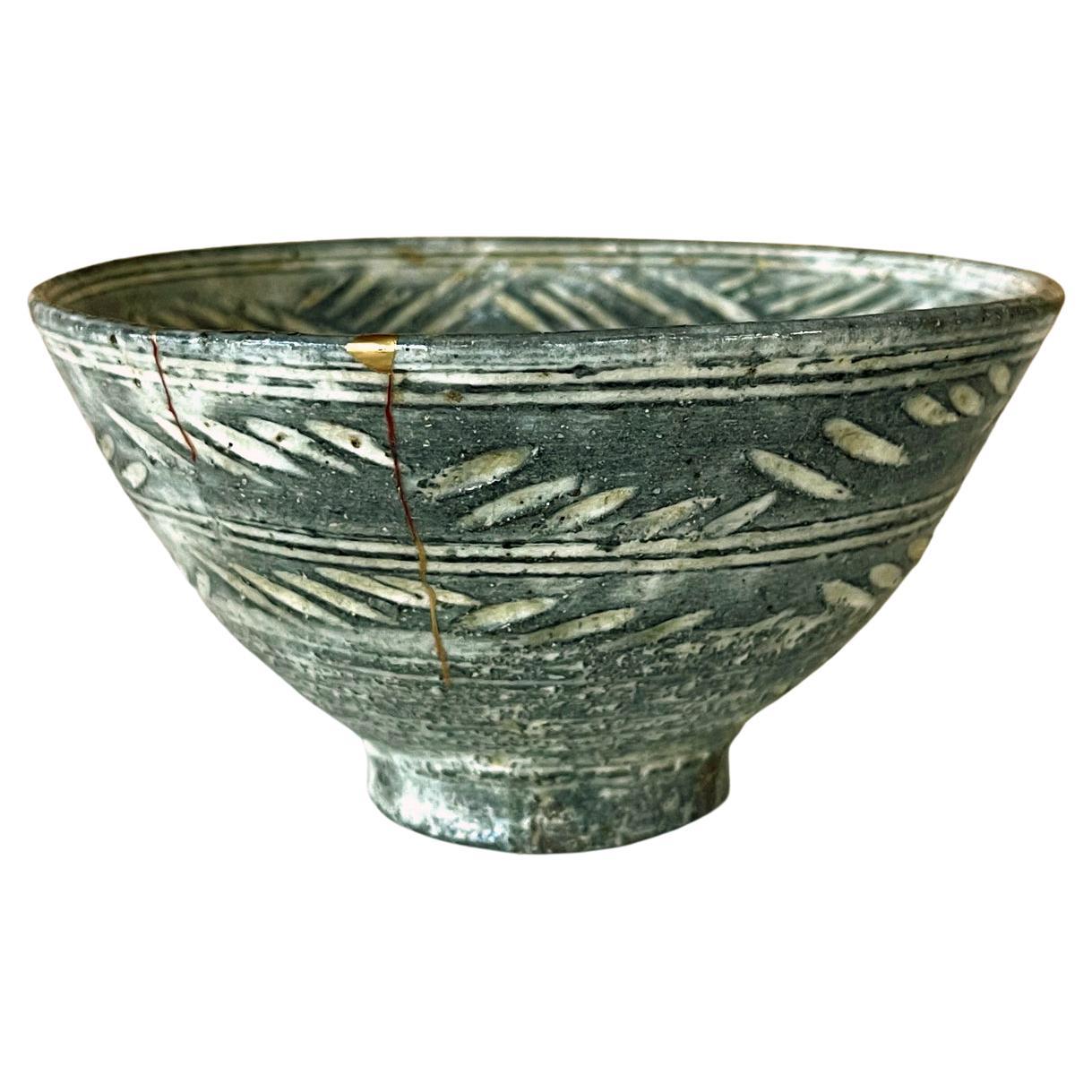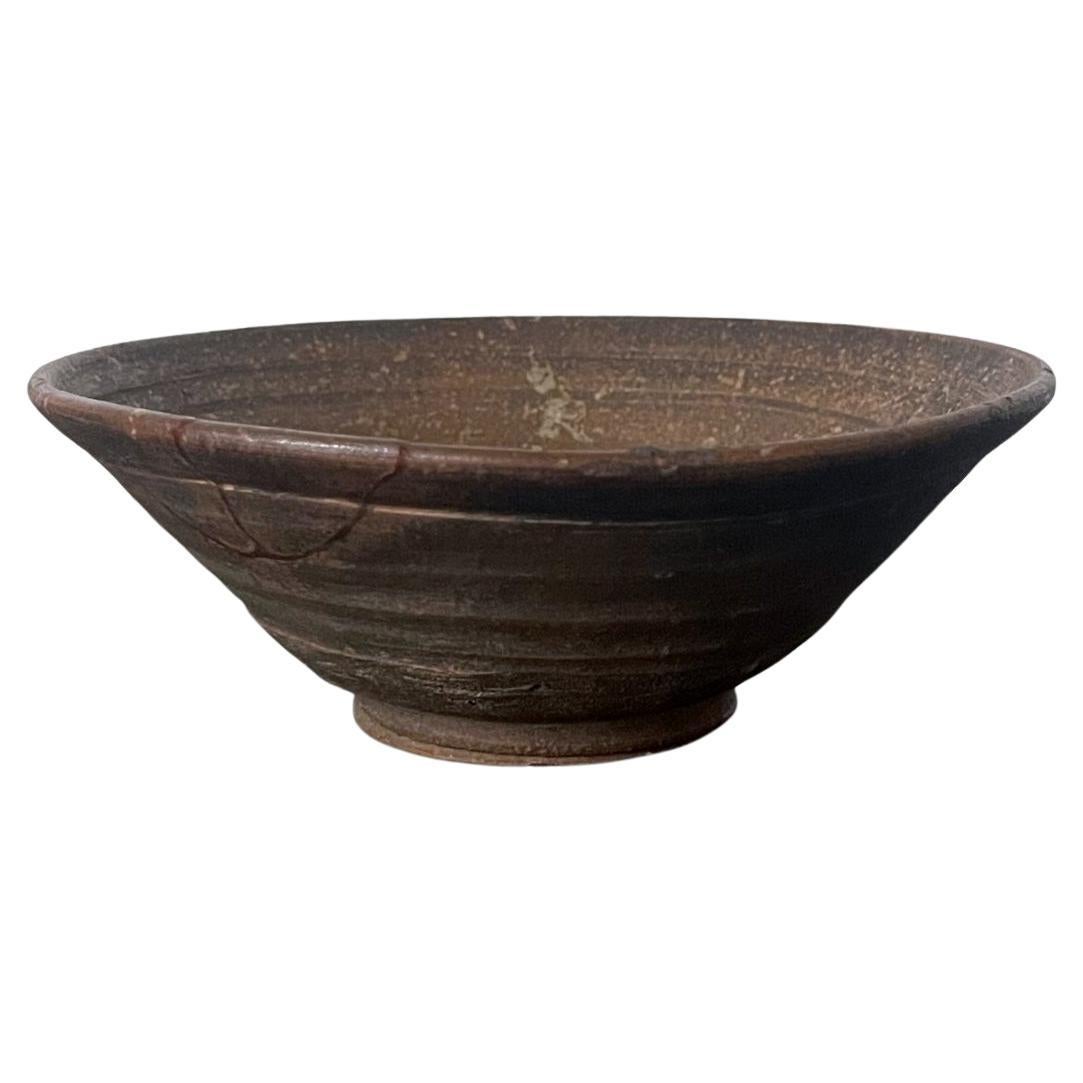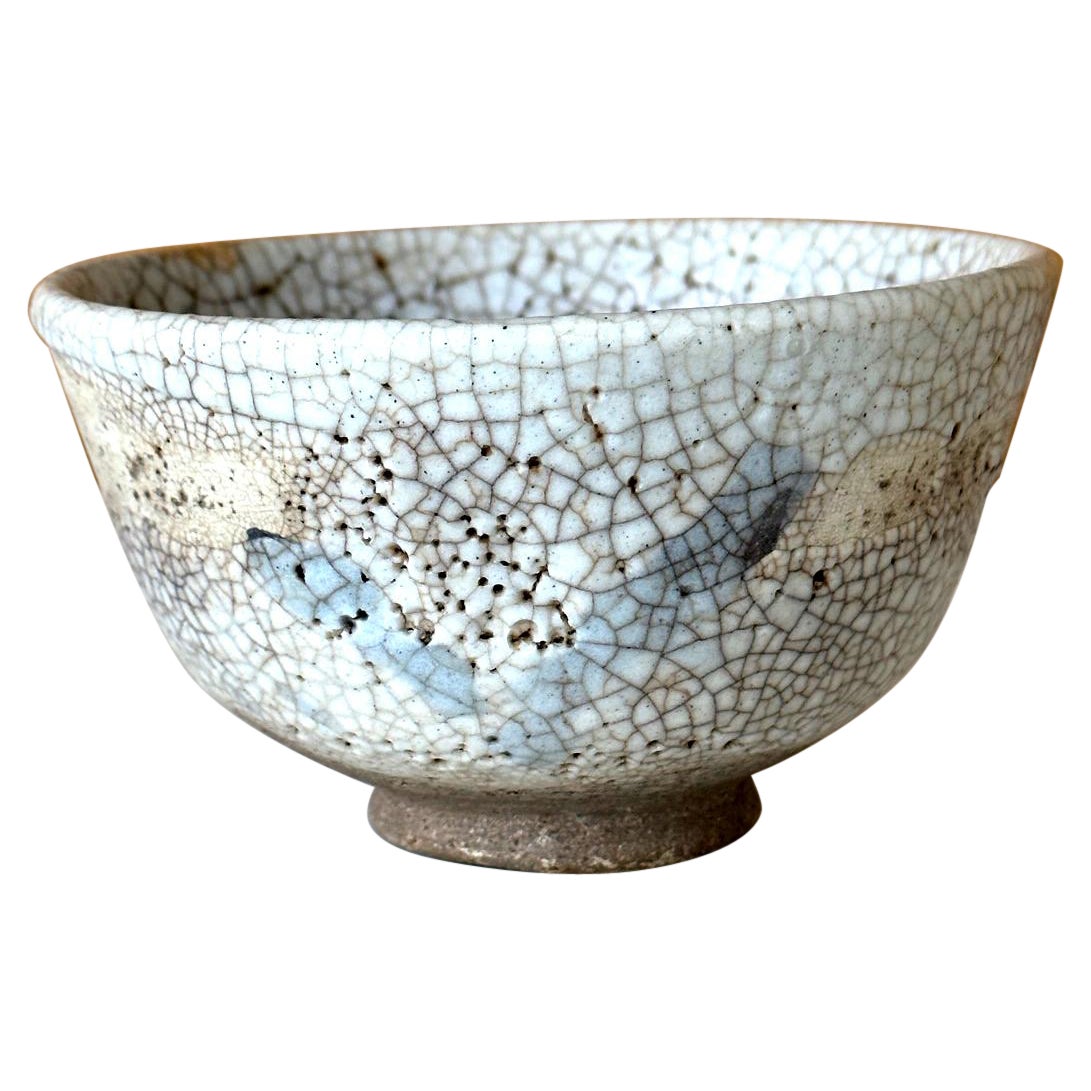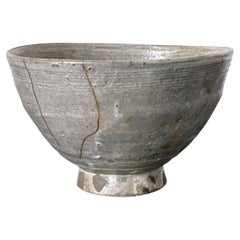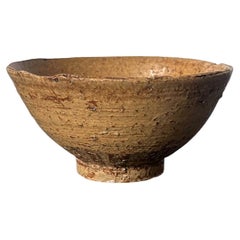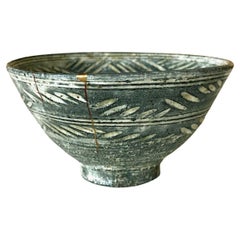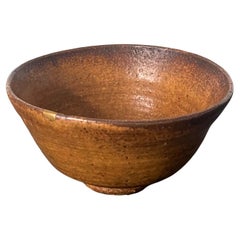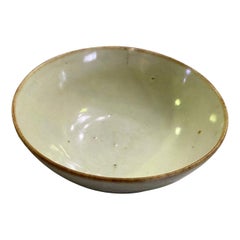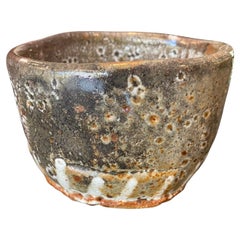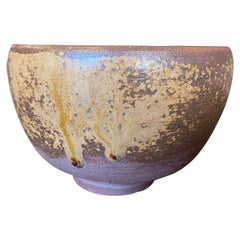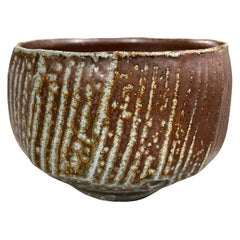Items Similar to Antique Korean Ceramic Gohon Chawan Tea Bowl Joseon Dynasty
Want more images or videos?
Request additional images or videos from the seller
1 of 18
Antique Korean Ceramic Gohon Chawan Tea Bowl Joseon Dynasty
$3,800
£2,883.35
€3,296.86
CA$5,307.57
A$5,901.30
CHF 3,081.33
MX$71,833.13
NOK 39,316.44
SEK 36,837.62
DKK 24,605.04
Shipping
Retrieving quote...The 1stDibs Promise:
Authenticity Guarantee,
Money-Back Guarantee,
24-Hour Cancellation
About the Item
A ceramic chawan (tea bowl) circa 17-18th century fired in the Busan kiln in Southern Korean specifically for the Japanese market. The kilns were controlled by the So clan that ruled Tsushima Island to fill the order from Japan with detailed preferences. Known as Gohon chawan, the name came from the order forms and catalogue books (known as gohon in Japanese) that the tea masters used in Momoyama period. The production lasted for about eighty years from 1637-1717.
The bowl on offer has a harmonious alms bowl shape supported by a foot ring. The surface was covered in a white slip glaze over a grey background. The glaze is intentionally uneven in places, with some scattered pink spots known as kase or gohonte. These were the results of the fire reduction, which is one of the characters of these Gohon bowls. The glaze on the lower portion shows small pinholes known as Suana in Japanese, which were found in later Shino ware. The foot ring was partially glazed with a crawling effect, exposing the dark reddish clay underneath. In the center of the base ring, there is a pointy called Tokin, which was often present in old Korean Ido bowls that Japanese tea masters adored. It was perhaps part of the specifics from the order. The surface of the tea bowl displays significant patina: there are noticeable tea stain in the interior well and several superb historical kintsugi repairs on the rims as well as on the body, further adding beauty to this piece.
The bowl comes with a fabric wrap and a tomobako box, but both are clearly from later period.
- Dimensions:Height: 3.5 in (8.89 cm)Diameter: 4.5 in (11.43 cm)
- Style:Edo (Of the Period)
- Materials and Techniques:
- Place of Origin:
- Period:
- Date of Manufacture:17th-18th Century
- Condition:Repaired: Historical Kintsugi Repairs as shown. Wear consistent with age and use. Fine condition with patina and kintsugi repairs. Tomobako with much wear.
- Seller Location:Atlanta, GA
- Reference Number:1stDibs: LU945031558662
About the Seller
4.9
Platinum Seller
Premium sellers with a 4.7+ rating and 24-hour response times
Established in 2006
1stDibs seller since 2010
564 sales on 1stDibs
Typical response time: <1 hour
- ShippingRetrieving quote...Shipping from: Atlanta, GA
- Return Policy
Authenticity Guarantee
In the unlikely event there’s an issue with an item’s authenticity, contact us within 1 year for a full refund. DetailsMoney-Back Guarantee
If your item is not as described, is damaged in transit, or does not arrive, contact us within 7 days for a full refund. Details24-Hour Cancellation
You have a 24-hour grace period in which to reconsider your purchase, with no questions asked.Vetted Professional Sellers
Our world-class sellers must adhere to strict standards for service and quality, maintaining the integrity of our listings.Price-Match Guarantee
If you find that a seller listed the same item for a lower price elsewhere, we’ll match it.Trusted Global Delivery
Our best-in-class carrier network provides specialized shipping options worldwide, including custom delivery.More From This Seller
View AllKorean Gohon Chawan Tea Bowl for Japanese Market Joseon Dynasty
Located in Atlanta, GA
A ceramic chawan (tea bowl) circa 17-18th century fired in the Busan kiln in Korean specifically for the Japanese market. The kilns were run by the So c...
Category
Antique 17th Century Japanese Edo Ceramics
Materials
Ceramic
Korean Ceramic Ki-Irabo Tea Bowl Chawan Joseon Dynasty
Located in Atlanta, GA
A ceramic chawan tea bowl made in Korea for Japanese market circa 17th century. The chawan is identified as Ki- Irabo type (Yellow Irabo). Irabo bowls w...
Category
Antique 17th Century Korean Other Ceramics
Materials
Ceramic
Antique Korean Mishma Tea Bowl Chawan Joseon Dynasty
Located in Atlanta, GA
A Korean Hori-Mishima Chawan (tea bowl) circa 16th-17th century (Joseon Dynasty). The tea bowl is of an upright conical form supported by a high foot ring. It was decorated with incised brushwood fence patterns filled with white slip on both the interior and exterior surface. These dominant motifs were spaced by three encircling double lines. Seven chrysanthemum flowers (inka) were stamped on the lower interior surrounding a swirling tea well on the bottom. There are six spur marks known as Meato in Japanese on the interior bottom and a pointy spot in the center of the foot ring known as Tokin. Two crack lines were historically repaired by superb Kintsugi, adding a mysterious wabi-sabi appeal to the piece.
The Hori-Mishima bowl was also known as Gohon Mishima. It was made in Bushan Kilns of the Southern Gyeongsang Province specifically for the Japanese market in the 16th-17th century, when the tea ceremonies in Japan demanded such ware. The bowl comes with a purple fabric pouch...
Category
Antique 17th Century Korean Other Ceramics
Materials
Ceramic
Korean Ceramic Irabo Tea Bowl Chawan Joseon Dynasty
Located in Atlanta, GA
A ceramic chawan tea bowl made in Korea for Japanese market circa 17th century. The chawan is identified as Irabo type. Irabo bowls were essentially con...
Category
Antique 17th Century Korean Other Ceramics
Materials
Ceramic
Korean Ceramic Kakinoheta Chawan Tea Bowl
Located in Atlanta, GA
A "Kakinoheta" type ceramic chawan (tea bowl) made in Korean during Joseon dynasty circa 16th-17th century. The bowl has a slight irregular flat shape w...
Category
Antique 17th Century Korean Other Ceramics
Materials
Ceramic
Japanese Shino Chawan Tea Bowl Edo Period
Located in Atlanta, GA
A Japanese ceramic Chawan (tea bowl) of e-Shino (painted Shino) ware style circa mid-late 18th century Edo period. The classically shaped bowl features an abstract blue paint of blue grass and displays strong characters in the milky white glaze, with overall crawling and crackling effect. One of the most distinctive characteristics of Shino that is exemplified on this bowl is the small pinholes called suana, which tea masters favor (termed as yuzuhada, or citron skin). The milky-white feldspar...
Category
Antique Late 18th Century Edo Ceramics
Materials
Ceramic
You May Also Like
Korean Joseon Dynasty Glazed Pottery Ceramic Hakame Chawan Tea Bowl
Located in Studio City, CA
A wonderful Joseon Dynasty (1392-1897) Korean pottery bowl with a beautiful muted glaze, color, and nicely aged patina.
As this is not our area of expertise, we are listing it si...
Category
Antique 19th Century Korean Ceramics
Materials
Pottery
Japanese Asian Signed Studio Pottery Wabi-Sabi Ceramic Glazed Chawan Tea Bowl
Located in Studio City, CA
A gorgeous Japanese studio pottery chawan tea bowl that features a mix of shifting colors, glazes and textures as well as elements of Shino Ware and Hagi Ware. The piece radiates in...
Category
20th Century Japanese Showa Ceramics
Materials
Earthenware, Pottery
Kaneshige Toyo Japanese National Treasure Signed Bizen Pottery Chawan Tea Bowl
Located in Studio City, CA
A beautiful, perfectly shaped antique Bizen ware Chawan tea bowl by renowned Japanese master potter/artist Kaneshige Toyo (1896-1967) featuring a unique one of a kind, natural, organic forming ash glaze. Kaneshige is universally considered to be the founder of modern Bizen Yaki Ware pottery.
In 1956, Kaneshige was certified as a Living National Treasure (Important Intangible Cultural Heritage) for his work in Bizen Ware pottery/ceramics. Bizen Ware is a type of Japanese pottery traditionally from the Bizen province, presently a part of the Okayama prefecture. It is considered one of the Six Ancient Japanese Kilns (along with Echizen ware, Seto ware, Shigaraki ware, Tamba ware, and Tokoname ware).
The piece is signed on the base with one of Kaneshige's traditional incised marks (fundo weight mark of Toyo) .
The work also comes with the original Toyo Kaneshige...
Category
Mid-20th Century Japanese Showa Ceramics
Materials
Pottery, Stoneware
Japanese Asian Style Signed Studio Pottery Wabi-Sabi Ceramic Chawan Tea Bowl
Located in Studio City, CA
A stunning Japanese Asian-influenced stoneware Studio Pottery Chawan tea bowl that features a beautiful dark rich glaze with wonderful shifts in pattern and texture.
This particula...
Category
20th Century Japanese Showa Ceramics
Materials
Stoneware
Korean Joseon Dynasty Glazed Pottery Ceramic Hakame Chawan Tea Bowl Dish
Located in Studio City, CA
A wonderful Joseon Dynasty (1392-1897) Korean pottery bowl/ dish with a beautiful muted glaze, color, and nicely aged patina.
As this is not our area of expertise, we are listing...
Category
Antique 19th Century Korean Ceramics
Materials
Pottery
Ogata Kenzan Signed Japanese Asian Edo Period Pottery Tea Bowl Chawan
Located in Studio City, CA
A spectacularly designed and beautifully made Chawan tea bowl dating back to the Edo period. This work is attributed to Ogata Kenzan (1663-1743) who is wi...
Category
Antique 18th Century Japanese Edo Ceramics
Materials
Pottery
